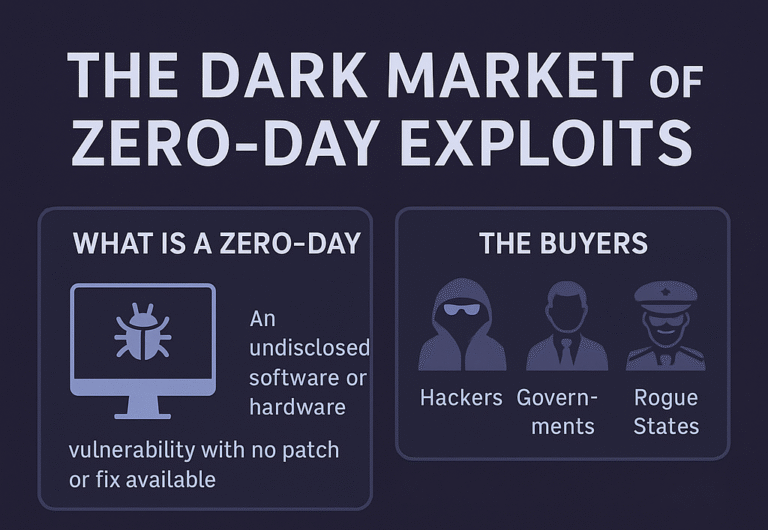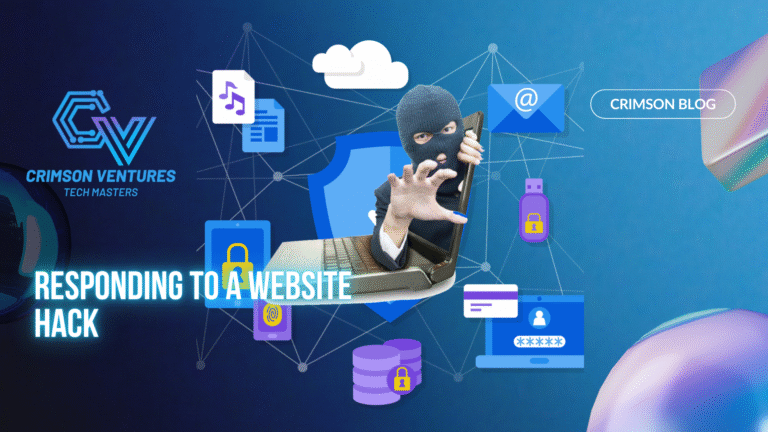“So, how does the world end? Nuclear war? A deadly plague? Falling asteroids? Probably not. The most likely cause is a mistake—an accident.”
In a world increasingly intertwined with technology, the most potent threats are no longer just missiles or viruses, but invisible weapons—lines of code that can bring nations to their knees. This is the chilling reality of the zero-day market: an underground economy where hackers, spies, and governments trade in the most dangerous digital vulnerabilities known to man.
What Is a Zero-Day Exploit?

A zero-day (or 0-day) exploit refers to a security flaw in software or hardware that no one—not even the company that built it—knows exists. Since developers have had zero days to fix it, attackers can use it to break into systems undetected. Unlike ordinary bugs, these vulnerabilities give attackers a secret backdoor into any system, from your personal smartphone to a nation’s critical infrastructure.
What makes zero-days terrifying is their power and secrecy. They can let hackers:
- Break into any iPhone, Android device, or computer.
- Bypass encryption to access messages, photos, and sensitive files.
- Sabotage industrial equipment, power grids, or nuclear facilities.
There’s no antivirus or firewall that can protect against a zero-day—because no one knows the door is open until it’s too late.
The Origins of the Zero-Day Market
In the 1980s and 90s, hacking was often a hobby. Curious coders would find vulnerabilities and report them to companies like Microsoft. But instead of gratitude, they were met with threats of lawsuits. Frustrated, some began posting bugs publicly, while others drifted into darker territory.
By the early 2000s, security firms like iDefense began offering small bounties to hackers who responsibly disclosed vulnerabilities. But soon, governments and intelligence agencies entered the scene, willing to pay millions for the right exploit. Unlike ethical security researchers, these buyers demanded secrecy—the zero-day’s value depended on it remaining hidden.
The Buyers: Spies, Governments, and Rogue States
Who buys zero-days? While you might hope it’s just “the good guys” using them to spy on terrorists, the reality is murkier. Any government, including those with questionable human rights records, can become a customer. And once purchased, these cyberweapons can be used to:
- Spy on political opponents or activists.
- Sabotage critical infrastructure.
- Wage cyberwar.
Edward Snowden’s leaks revealed the extent of this market. The NSA had built an arsenal of zero-days capable of infiltrating nearly any app, server, or system. But the same tools can—and do—end up in the hands of adversaries or criminals.
When Cyberweapons Go Off
Zero-day exploits aren’t just theoretical—they’ve already changed the world.

Stuxnet: The First Cyberweapon of Mass Destruction
In 2010, a worm called Stuxnet infected Iran’s nuclear facility, destroying a fifth of its uranium centrifuges. The attack used four zero-day exploits, delivered via a simple USB stick. The malware caused physical damage while fooling Iranian scientists into thinking everything was normal. Experts believe the U.S. and Israel created Stuxnet, and it set Iran’s nuclear program back years.
But Stuxnet did more than delay Iran—it launched a global cyber arms race. Like the first atomic bomb, it proved what was possible, and there was no turning back.
Wannacry: When Cyberweapons Fall Into the Wrong Hands
In 2017, ransomware called Wannacry paralyzed hospitals, airlines, and businesses across the world, causing an estimated $4 billion in damages. The attackers had used EternalBlue, a stolen NSA exploit. The hack was linked to North Korea. Ironically, a 22-year-old researcher accidentally discovered a kill switch and stopped the attack from spreading further.
NotPetya: The Most Damaging Cyberattack in History
A month after Wannacry, Russia unleashed NotPetya on Ukraine. It shut down ATMs, supermarkets, government agencies, and even disabled radiation monitors at Chernobyl. The damage: over $10 billion globally. And this attack used the same leaked NSA tools.
These incidents illustrate how hoarded exploits can backfire—once leaked or stolen, they can be repurposed for destruction.
Why You Should Care
We like to think of cyberwar as something that happens to other people, in distant places. But as our homes, cities, and economies become increasingly connected, everyone is at risk. A zero-day in your phone could expose your entire life. A zero-day in a power grid could plunge your city into darkness.
And despite tech companies’ best efforts—like bug bounty programs that reward ethical hackers—zero-day brokers still pay far more. Some, like Zerodium, publicly list prices: up to $2.5 million for a single iOS exploit.
What Can We Do?
While we can’t control the cyber arms race, there are steps individuals and organizations can take:
✅ Update your software immediately. Many attacks exploit bugs that have since been patched.
✅ Use strong, unique passwords and multi-factor authentication.
✅ Segment and secure critical systems. Particularly in industrial and government settings.
✅ Support policies that promote responsible disclosure.
✅ Be skeptical of “security through obscurity.” Just because something is offline or hidden doesn’t mean it’s safe.
Final Thoughts
The market for zero-day exploits reveals an unsettling truth: our connected world is built on fragile code. And while we marvel at what technology enables, we must also reckon with its dangers. In this silent arms race of ones and zeros, the next global catastrophe may not come with a bang—but with a click.










